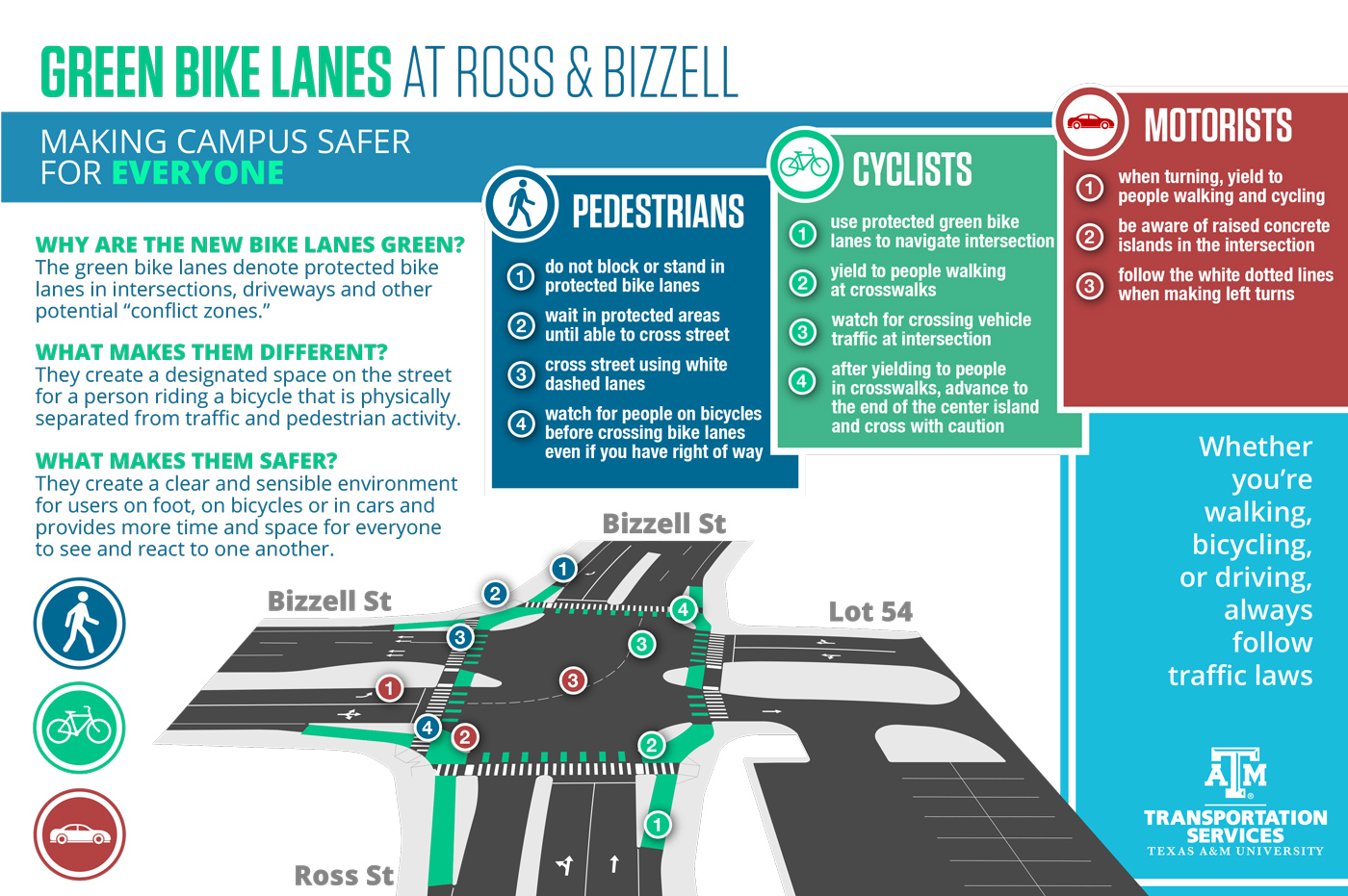Here's The First Glow-In-The-Dark Bike Lane In The U.S.
Fast Coexist
By Adele Peters
Published: February 6, 2017

At Texas A&M, no one will miss the new bike lane—just one part of this newly designed intersection with no traffic lights.
During the day, a bright green bike lane at a busy intersection on the Texas A&M campus soaks up the sun.
At night, thanks to a photoluminescent mineral in the paint, it starts to glow, lighting the path for cyclists.
The glow-in-the-dark lane—inspired by projects in the Netherlands—is the first of its kind in the U.S.
The intersection is also the first Dutch-style intersection without light signals in the country, designed to help solve the problem of how to get bikes in a separated bike lane safely across the street.
The university sees its campus as living labs, and wanted to test both ideas at an intersection that is particularly busy.
"Part of the issue is there's a lot of turning traffic at that intersection,
so vehicles were turning a lot in front of and across bicycles and pedestrians," says Robert Brydia, senior research scientist at the Texas A&M Transportation Institute.
"There was a lot of conflict and interaction at that point."
When classes get out, hundreds, or even thousands, of students pass through the intersection, creating conflict not only between cars and bikes, but also between bikes and pedestrians.
The new design aims to protect both people on bikes and on foot. Four islands, near the corner of each intersection, prevent cars from turning into the path of a cyclist.
Cars stop further back than they would at a normal intersection, making both bikes and pedestrians more visible. The bike lane has a curb to separate it from traffic and the crosswalk.
Green markings clearly show bikers where to go, and a green lane leads up to the intersection from each direction.

At night, the green path gently glows. "It's not an in-your-face blinding light," says Brydia. "It's supposed to be softly luminescent. It's a glow, as opposed to a vibrant display of color."
The school was the first to get Federal Highway Administration approval for the coating, and they're hoping that it will become more widely adopted across the country.
After installing the intersection in the fall of 2016, the university is now carefully studying how people use it, surveying the community about whether they feel safer,
and considering whether to replicate the design in other parts of the campus.